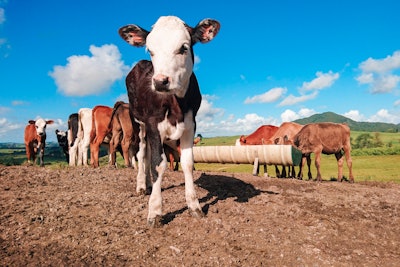
Keeping with this month’s theme – beef on dairy – I cannot but refer to the effect of early nutrition on finishing performance. We know little about this topic, although we do know that early nutrition plays a significant role in finishing performance, at least in beef-on-beef and dairy-on-dairy calves.
Here is the paradox: We take calves bred on a beef-on-dairy scheme from dairy operations. These are more likely than not raised up to 10 months of age according to the dairy operation’s feeding guidelines for straightbred dairy calves. Sometimes, after weaning, the males (no matter the breed) receive the worst possible nutrition program, but that is a totally different matter. Nevertheless, in many cases, these animals receive a low nutrition program – highly likely if the dairy producer and the beef producer are not the same or if the latter does not want to pay more for properly conditioned animals. This was the case for male dairy calves and in many cases, this remains the case for crossbreeds.
Then, these poorly conditioned (stressed) animals enter the finishing feedlot, where they are expected to perform like normal straightbred beef cattle on high-energy rations. In most cases, such animals fail to do so, and results are disappointing. This leads to great misconceptions regarding the potential of beef on dairy programs. This is evidenced not only in practice, but also on research. Of course, not all straightbred beef calves are treated as they should be before entering the feedlot, but at least this is an acknowledged problem.
In contrast, in cases of beef-on-dairy programs, we assume the animals will perform better than straightbred dairy calves, and when this does not happen, we blame the animals. This is not correct. The genetic potential for better performance and even improved carcass characteristics is there for beef-on-dairy calves. We are preventing them from reaching that potential because we do not yet know how to treat and feed these animals, from the beginning and not just the finishing stage.

















